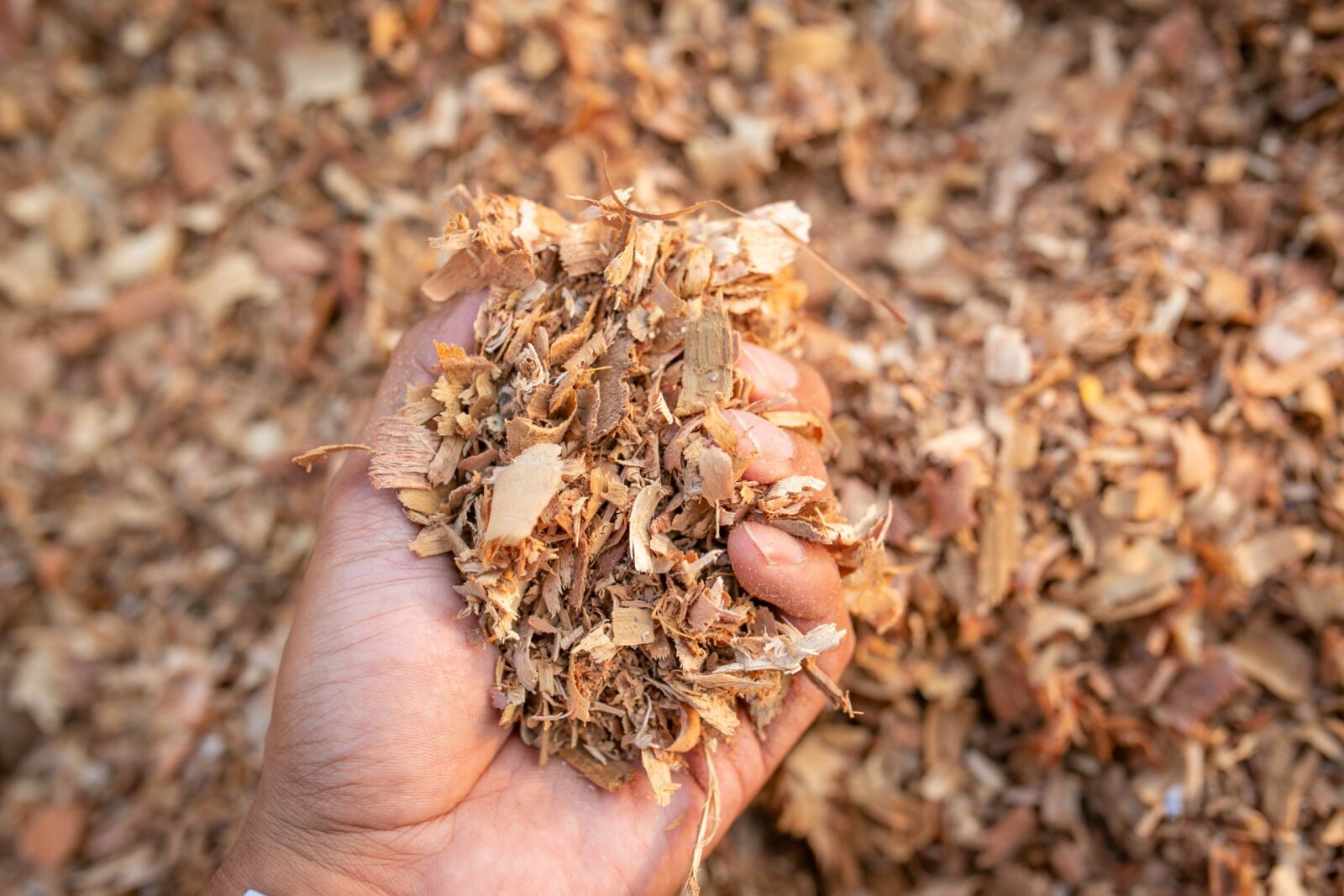Recycled wood pallets (shavings)
Recycled wood chips generally come from recycled wood pallets. There have been mixed outcomes with using recycled wood material as chicken litter in Australia. The major issue is chemical contamination, although physical contamination can also be a problem.
Characteristics
Low bulk density; medium particle size; soft with good insulating properties; low thermal conductivity; high absorbency; good drying rates; high friability.
Contaminants and pests
Generally free from pests, weed seeds and diseases if stored correctly before use. There is no evidence that they are more susceptible to litter beetle infestations than other bedding material.
The major concern with using recycled wood pallets is the risk of chemical and physical contamination. Pallets that are used for transport of goods internationally are made of treated timber (copper chrome arsenate – CCA). Pallets may also have been used to transport toxic materials, leading to contamination with paint, fuel, pesticides, solvents and other flammable materials. Nails can be a source of physical contamination.
Sourcing and pre-treatment
Recycled wood pallets were unsuccessfully trailed in Victoria, where there were problems with contamination in certain recycling facilities. However, recycled wood materials are successfully used in Western Australia for a large portion of its chicken meat industry. The recycling plant that produces this material has stringent operating procedures and chemically tests products to ensure it meets industry requirements. A small proportion of chicken meat producers in New South Wales also use recycled wood materials for litter, supplied by a private pallet company.
Strict processing and quality controls are required to ensure that chicken meat industry specifications are met and contamination is minimised. Specific screening equipment is required, and plant operators need to be educated to ensure incoming timber is not contaminated. Processed materials should be stored away from incoming timber to avoid cross-contamination. A typical process to ensure a safe product is:
- Visually screen pallets coming into the plant to ensure only untreated and unpainted end-of-life Australian timber pallets, packaging and off-cuts are used
- Test all pallets for chromated copper arsenate (CCA) before processing
- Process pallets into wood chip and fines
- Analyse each batch for organic and inorganic contaminants
- Regularly test by an independent third party for organic and inorganic contaminants.
- Ventilation and moisture management—They do not require any increased management, as they are adsorbent yet can dry rapidly with correct ventilation due to their porous structure.
Caking and tilling
As with all bedding materials, wood shavings may require tilling to address caking if it is not managed correctly and/or becomes too wet from chicken manure, outside moisture or extraneous water from broken or poorly maintained infrastructure. Extra management may be required, as larger particle sizes may be more susceptible to caking.
Litter re-use
Re-use with recycled wood chips has not been common in Australia, as most re-use has occurred in Queensland and New South Wales, where wood chip use in minimal. It has, however, been successfully re-used in other countries.
Spent litter management
Useful as a fertiliser under Australian conditions due to its consistency and being a wood-based product, which makes it generally free of weed seeds and other pests.
It is less desirable for use in energy generation using anaerobic digestion, as the timber component will not readily digest. However, the manure and wood components will generate energy in combustion processes, provided the moisture content is low.
Downloads and resources
Best practice litter management manual for Australian chicken meat farms (PDF, 3MB) | online version
Review of fresh litter supply, management and spent litter utilisation (PDF, 3.5MB)
Litter re-use: an evidence-based guide to re-using litter (PDF, 1.3MB)
References
Bouffier, C. G., Downing, C. C. and Riall, B. W. (1995) Pallet disposal: current situation and opportunities for change, Georgia Tech Research Corporation, Atlanta, Georgia, United States of America. Available from https://citeseerx.ist.psu.edu/viewdoc/download?doi=10.1.1.405.4822&rep=rep1&type=pdf
Eastern Metropolitan Regional Council (EMRC) wood chip and fines https://www.emrc.org.au/operations-and-projects/waste-and-recycling-services/recycling-services-and-products/emrc-recycled-products/wood-chip.aspx (Perth, Western Australia)


